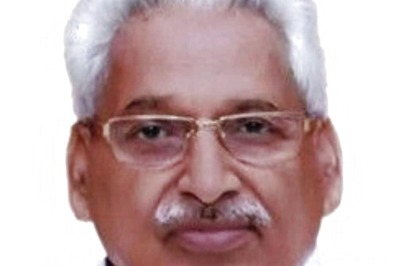
views
In late April 2020, microbiologist Dr Elisa Granato had woken up to the news of her death, splattered all over the social media. The internet was viral with ‘fake news’ that she had died following the administration of a COVID-19 vaccine under clinical trial, in which she was amongst the first few volunteers in the UK. Dr Granato responded to the internet rumours, by posting on her social media profile that she was ‘doing fine’. This is just a glimpse of what the world has faced in the last two years of the COVID-19 pandemic.
The ‘Infodemic’ is an overabundance of information—some accurate, some not—that spread alongside a disease. Amid the COVID-19 pandemic, the infodemic has been recognised as a major challenge by the World Health Organization (WHO).
In the past two years of the pandemic, every citizen and country across the world has experienced all kinds of wrong and misleading information, some of which is shared and circulated as if it’s scientifically proven. People have received conflicting information from different sources. The originators of misinformation always had a more definitive tone in their assertions than the scientists and public health experts, who were diligently waiting for more evidence and were always tentative. After all, science is about questioning itself and posing more questions. The scientific research posted on preprint servers was being interpreted incorrectly by those who had no or limited prior experience and expertise in scientific research.
The general public often received wrong information on nearly every aspect of the COVID-19 virus, infection, disease, vaccines, clinical symptoms, therapies, testing, and other epidemiological terms. This information was not only quantitatively abundant but ranged from factually correct to misleading and complete misinformation. While everyone needs scientific information, the impact of misinformation has been the worst on the poor and marginalised.
The scientific research posted on preprint servers was being interpreted incorrectly by those who had no or limited prior experience and expertise in scientific research.
Also Read: As Stealth Omicron Ravages Europe, China, What is Protecting Indians?
Making inferences during the pandemic required a comprehensive and cumulative understanding of the principles of epidemiology and public health. However, the pandemic also brought in the ‘know-it-all experts’, omnipresent on television channels and ubiquitous on social media, who were always full of opinion and definitive in their conclusions, which, at times, were furthest from the scientific facts. One of the most popular misinformation in India was that the third wave would affect children. Incorrect as it was, this created doubt in the minds of policymakers, who delayed the decision on school re-opening. Then, the parents hesitated to send the children to the school even when the in-person classes were only partially resumed after much delay. The impact of this single misinformation has been monumental.
The spread of misinformation amongst citizens led to serious consequences of vaccine hesitancy, a lack of public cooperation with contact-tracing efforts, and noncompliance with public health measures on COVID appropriate behaviours. The unproven therapies being sold as cure and opinion being peddled as final truth has all been challenged in the pandemic response. The consequences have been widespread and severe.
Many other countries have also experienced a similar situation. In Europe and the Americas, people have been actively opposing the proven public health tools such as face masks or vaccines. In the Asia Pacific, most countries had faced a variety of challenges with misinformation. The countries had to resort to legal measures and social media restrictions to prevent harm. South Korea has used ‘big data’ and ICRT platforms to regularly communicate to the general public on various aspects of the pandemic and fight the misinformation. In Fiji and Solomon Islands, the international NGOs worked with national governments to fact-check the incorrect information and counter the misinformation. In Bangladesh, the mobile network operators worked with the Ministry of Health to generate awareness about various aspects of the disease. Mongolia had used the child-oriented video to communicate correct pandemic-related information and identified children as important influencers in the family.
Most countries have simultaneously been fighting two pandemics: the coronavirus and the infodemic, both being equally harmful. The challenge of the infodemic is increasingly being recognised in the fight against the COVID-19 pandemic. Dr Tedros Adhanom Ghebreyesus, Director-General of the WHO has said that the “Public trust in science and evidence is essential for overcoming COVID-19, therefore, finding solutions to the infodemic is as vital for saving lives from COVID-19 as public health measures. When disinformation is repeated and amplified, including by influential people, the grave danger is that information which is based on truth, ends up having only marginal impact.”
The governments in most parts of the world are not always very prompt and agile in responding to misinformation. However, the situation improved mostly marginally. In the last two years of the pandemic, the national and provincial authorities have repeatedly engaged in issuing clarifications to ensure that people don’t fall prey to such rumours and fake news. Reports of social media companies such as Google, Facebook (Meta), etc., working to combat COVID-19 misinformation were also witnessed.
India removed the National Disaster Management Act of 2005 to tackle the pandemic and removed most of the restrictions except for face masks and physical distancing.
The world is still in midst of the pandemic. In December 2021 and early 2022, the fifth SARS CoV2 variant of concern Omicron (B.1.617) had emerged, which subsequently was identified to have three sub-lineages of BA.1, BA.2 and BA.3. In March 2022, XE Recombinant variant of Omicron was also noted. The emergence of the Omicron variant resulted in fresh waves in many countries including the third wave of COVID-19 in India. However, by then, the COVID-19 vaccine coverage, as well as natural infection, essentially meant that the impact of the third wave in India was limited. This could become possible as learning from previous waves mechanisms were institutionalised and properly executed. By 31 March 2022, India removed the National Disaster Management Act of 2005 to tackle the pandemic and removed most of the restrictions except for face masks and physical distancing. Alongside, in March-April 2022, there has been a resurgence of fresh waves around the world; COVID-19 cases in China have surged and Shanghai has been placed under strict lockdown during the second week of April 2022.
Adopting certain measures
Clearly, the world is still battling the COVID-19 pandemic and we need to continue to tackle the infodemic, for which a few steps need to be undertaken.
Firstly, every country needs to review the information epidemic in their settings, the possible sources, and initiative effective measures to tackle the challenge. Tackling the infodemic has to be a part of the communication strategy of the pandemic response.
Secondly, the social media firms should consider implementing more robust reporting mechanisms for their users to flag content, and could also consider informing users when certain incorrect posts have become common and widely read. This has started to an extent but there is more scope.
Thirdly, in response to the infodemic, it is important to understand the concerns and questions of the community and provide timely responses. The information vacuum in a pandemic is likely to be filled by misinformation. Therefore, it is crucial to listen to people, conduct research to identify key concerns and provide responses.
The medical and public health specialists carry the responsibility of ensuring an honest and open communication from their end, accepting what they know and what they don’t, especially, in a scenario where a new pathogen is detected and disease outbreaks and epidemics are on the rise.
Fourthly, it is vital that healthcare professionals and even subject experts are trained in risk communication for epidemics and pandemics. In the absence of effective skills and the right training, they fail to communicate messages fully. The influential and reliable experts should be engaged in risk communication and advising people.
Finally, it is important to engage and empower various communities to take action and counter misinformation. The civil society network and the local influencers can be effectively used.
The medical and public health specialists carry the responsibility of ensuring an honest and open communication from their end, accepting what they know and what they don’t, especially, in a scenario where a new pathogen is detected and disease outbreaks and epidemics are on the rise. It is an even bigger responsibility of the medical fraternity and everyone to avoid speaking on subjects they are not an expert in. Then, within the peers, it is equally important to call out the misinformation coming from their peers.
In the entire process of responding to the infodemic, it is important to tailor the health communication for the target audience and ensure that these messages are communicated in the language which people understand and reach to the last mile. It is not enough to wait for misinformation but proactively share information through trusted sources, in a timely manner and transparent approach. Science and evidence have to be important tools to counter the infodemic.
The infodemic has been a challenge throughout the COVID-19 pandemic. Two years into the pandemic, all countries are better informed about the challenge. Countries need to learn from the good practices and experiences of other countries. In the last-mile fight against the pandemic, tackling misinformation is as important for the COVID-19 response as the scaling up of vaccination as well as other public health measures.
This article was first published on ORF.
The author is a medical doctor, epidemiologist, public policy and health systems expert. He is the lead co-author of ‘Till We Win: India’s Fight Against The COVID-19 Pandemic’. The views expressed in this article are those of the author and do not represent the stand of this publication.
Read all the Latest Opinion News and Breaking News here


















Comments
0 comment